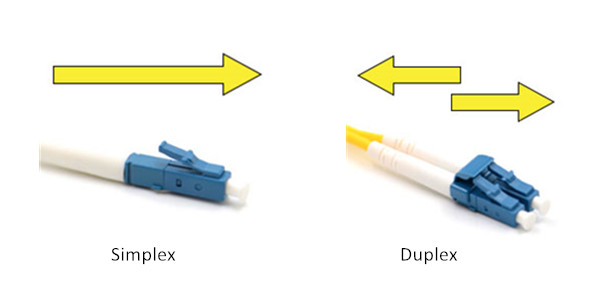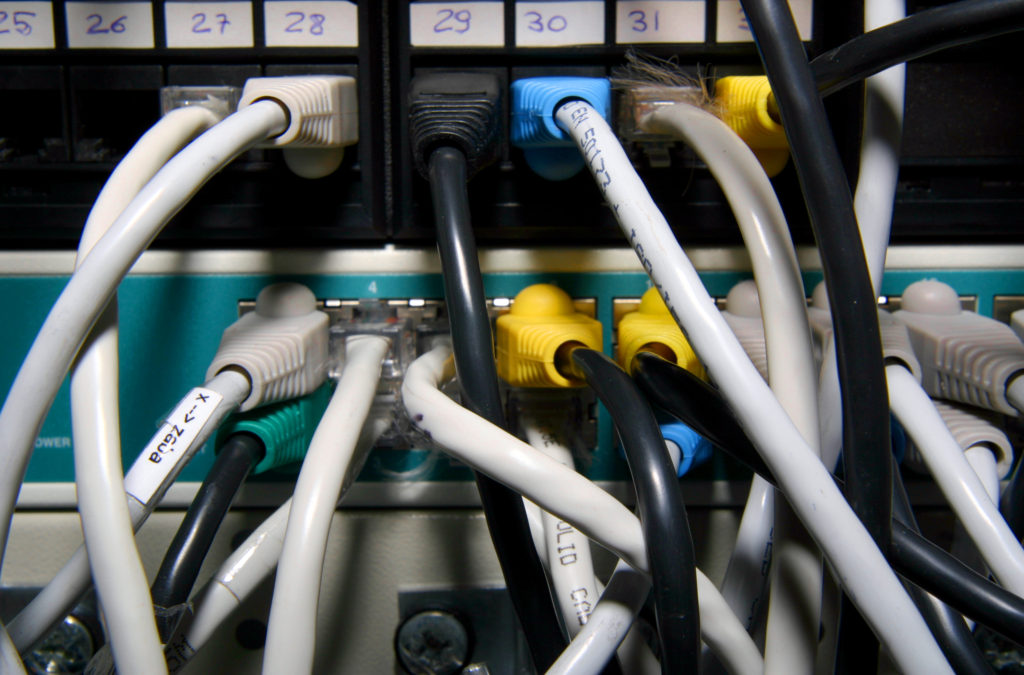All the fiber optic cables are made from plastic or glass, and they remain widespread in data transmission. The current market offers a diversity of fiber optic cables designed for different purposes. One of the classifications divides these cables into simplex and duplex types. Simplex and duplex are both options for the threads within a fiber optic network. Today, we`ll try to determine the differences between simplex vs. duplex fiber optic cable.
Simplex fiber optic cable at the glance
Simplex fiber cables contain only a single glass or plastic strand, and thereby the signals can be transferred in one direction via such wires. For instance, if a signal travels from device 1 to device 2 over a simplex fiber optic cable, it can not go back to the former device through the same line. Considering such specifics of simplex fibers, technicians implement them mostly in technologies that require one-way data transmission.
A simplex fiber cable can be found in devices that feature one receiver and transmit line. Furthermore, simplex fibers are standard in areas with multiplex data signals. The main applications are associated with automated speed sensors, digital data readouts, and more. Simplex fiber optic cables come in both single-mode and multi-mode. The transmitter is on one end of a thread, and the receiver is attached to the other end of a simplex wire.
What is a duplex fiber cable?
At the same time, a duplex fiber optic cable features two strands of plastic or glass in a core. As for the signal transmission, these cables appear bi-directional. One fiber transfers data in one direction, and another fiber is in charge of data transfer in the opposite direction. Apart from that, duplex fiber optic cables come full-duplex and half-duplex. The former type ensures data transmission in both directions simultaneously, while the second type provides data transfer in a single order at a given time.
These cables are often implemented where the required bi-directional, simultaneous data transmission or a separate transfer and receive is crucial. Thus, duplex fibers usually occur in fiber modems, telecommunications, workstations, servers, switches, etc. Like simplex fiber optic cables, duplex ones come in both single-mode and multi-mode. These cables feature both ends with a transmitter and a receiver.
Simplex vs. duplex fiber

When we compare these fiber optic cables, the main differences lay in the transmission direction and the number of fiber strands. Simplex fibers work only in single-way data transfer, while duplex cables ensure bi-directional transfer mode. In addition, simplex fiber cables consist of one tight-buffered strand of fiber, and duplex cables feature two strands of fiber in a core. Another vital difference is associated with cost. As simplex fibers incorporate fewer source materials, they consequently cost cheaper.
Simplex and duplex fiber optic cables are similar in single-mode and multi-mode features. The former kind is better used over long distances since it can carry one ray of light. Still, short-distance technologies commonly utilize multi-mode cables with their higher dispersion.
